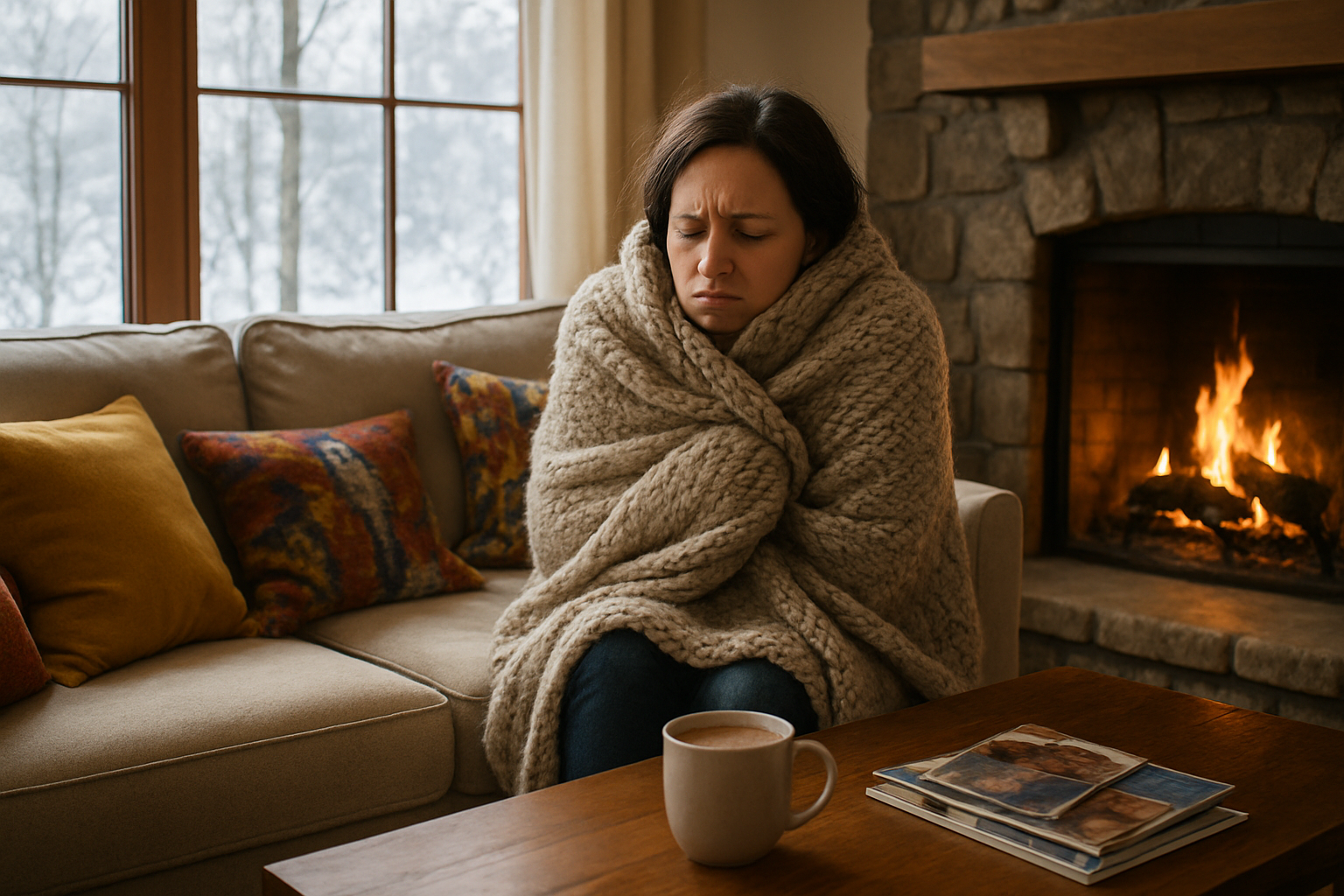What is a Convective Loop and How Does it Steal Comfort from Your Home?


If your home feels chilly even when the heat is running, there may be a sneaky culprit at work – one that’s hiding inside your walls.
We’re not talking drafty doors or leaky windows.
We’re talking about convective loops in wall cavities, which are a lesser-known but major source of convective heat loss in a home.
Let’s walk through what a convective loop is, how it forms, and most importantly, how to reduce heat loss in a home caused by this invisible air movement.
Key Points:
• Convection heat loss happens when air moves inside wall cavities and carries heat with it.
• There are two types of convective loops: open convective loops and closed convective loops.
• This air movement leads to cold rooms, high utility bills, and even frozen or burst pipes.
• Convective loops happen in poorly insulated or uninsulated walls, including block walls and metal framing.
• Air sealing the building envelope is the most effective way to stop convective heat loss and improve comfort.
What is a Convective Loop? (Convective Loop Definition)
A convective loop is a circular air movement pattern inside your wall cavity.
Warm air rises, cool air sinks, and that creates a cycle – kind of like a tiny invisible Ferris wheel of temperature swings inside your wall.
That airflow carries heat away, creating convective heat loss, which can make rooms colder and HVAC systems work harder.
What is Convective Heat Loss?
Convective heat loss occurs when air circulates through walls, pulling heat with it and lowering indoor comfort. And because it happens inside the wall, most homeowners never realize why their home feels drafty.
Open vs. Closed Convective Loop: What's the Difference?
There are two types of convective loop heat loss: open and closed convective loops.
Let’s get into the difference between the two.
Open Convective Loop
This one has a direct connection to the outdoors.
- Cold air sneaks in
- It warms up inside the wall
- Then it sneaks back out, taking your warm air with it
Result? Heat is literally escaping your house.
Closed Convective Loop
This type stays inside the wall cavity, but it’s just as problematic.
- Cold exterior air chills part of the wall
- Warm indoor air heats the other side
- The air moves in a continuous temperature roller-coaster loop
Even though the air never leaves, the constant warm-cold cycle steals heat from your home, causing uneven temperatures.
Where Does Convective Looping Happen?
Convective loops most commonly occur when wall cavities lack insulation or air sealing, including:
- Wood-frame walls with little to no insulation
- Hollow concrete block walls
- Metal stud partitions without insulation
If air can travel freely inside the wall, convective heat loss can and will happen.
Why is Convective Heat Loss a Problem?
Let’s break down the consequences of convective loop heat loss.
1. Insulation Breakdown
Traditional insulation materials degrade faster when air continuously moves through them.
Over time, they simply stop performing.
2. Frozen or Burst Pipes
Circulating cold air in wall cavities can freeze plumbing, and nobody wants a surprise indoor waterfall.
3. HVAC Inefficiency
Warm air from ducts loses heat to the cold air looping inside the walls.
Your furnace works harder, and your energy bills climb.
4. Thermostat Misreadings
Convective loops can trick your thermostat into thinking the house is colder than it is, leading to 20 to 50 percent higher heating costs.
5. Temperature Imbalances
Those “why is this room always freezing?” complaints?
Yup, that’s convective looping.
How to Detect Convective Looping
You can’t see inside your walls, but you can diagnose the problem.
A blower door test can identify air leaks by measuring the pressure throughout the home.
A thermal imaging camera will show cold spots inside wall surfaces where convective loops are active. If you see cold streaks vertically or horizontally across the wall, that is a convective loop in action.
How to Fix Convective Loop Heat Loss
If you believe your home has been affected by convective heat loss, you have a few options to fix it.
- Air seal the building envelope: The most effective solution is to seal the walls so air can’t circulate inside them.
- Add spray foam insulation: Foam insulation creates an air-tight barrier in the wall cavity, stopping convective loops altogether.
- Seal gaps around openings: Caulk around windows, doors, and wall penetrations to reduce air infiltration.
When the building envelope is sealed, cold air can’t sneak in and warm air can’t escape, meaning consistent comfort and lower bills.
Ready to Stop Convective Heat Loss?
Convective looping may be invisible, but the effects are hard to miss – cold rooms, frustrated thermostats, and rising energy bills.
Air sealing your walls makes your home:
- Warmer
- More efficient
- More comfortable year-round
If you’re ready to fix convective loop heat loss for good, find a RetroFoam dealer near you and take control of your comfort.
Related Articles
What is Air Sealing Your Home with RetroFoam Insulation?
Sealing the Comfort Gap: Treating Your Home Like a Fridge
How to Block Drafts and Fix a Drafty House
FAQs About Convective Loops and Heat Loss in Homes
What causes convective loops in walls?
Convective loops form when air can move inside uninsulated or poorly insulated wall cavities, creating continuous circulation.
Is convective heat loss common?
Very – especially in older homes, block construction, and buildings without fully continuous insulation.
What's the best way to reduce heat loss in a home caused by convective loops?
Air sealing the building envelope and adding foam insulation is the most effective long-term solution.
Can fiberglass or cellulose stop convective looping?
Not effectively.
These materials struggle to stop air movement, which is why foam performs better in this situation.
How do I know if my home has convective heat loss?
Uncomfortable rooms, cold walls, high bills, or thermal imaging scans are strong indicators.
About Amanda Emery
Amanda previously has worked as a breaking news and crime reporter, TV news producer, and editor. As a journalist, she has won several awards from The Society of Professional Journalists - Detroit Chapter and the Michigan Press Association. Amanda uses her experience as a journalist to write content that will help educate homeowners on foam insulation benefits. When Amanda isn’t writing, she’s spending time with her husband Chris, daughter Lilith-Maeve, and rescued huskies Danger and Wendigo. She also loves knitting, making art, and cooking.



